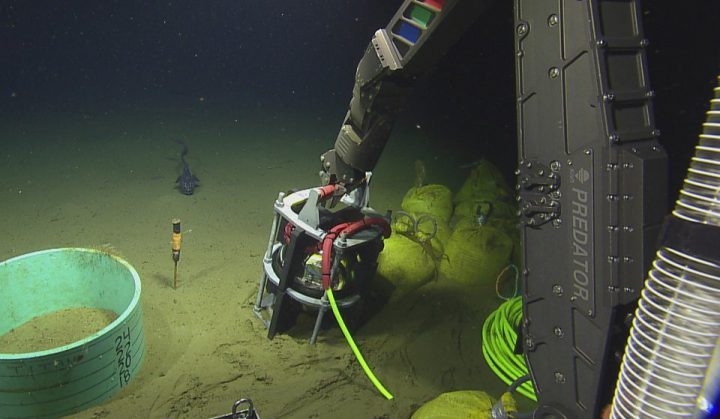
A network of seismic sensors gave researchers a 35-second warning before ground shaking from a 4.8-magnitude earthquake that struck off Vancouver Island last week reached Victoria and Vancouver, passing another significant test before it is incorporated into a province-wide alert system.
Ocean Networks Canada, a monitoring initiative of the University of Victoria, says its network of deep-sea and land-based sensors being used to develop the system would have given public safety officials and eventually, even residents, a heads up before any shaking began Friday night.
While the earthquake off Tofino didn’t cause damage, the team says when a large earthquake inevitably happens, each second of advance warning to emergency officials could go a long way toward preventing injury or death.
“That amount of time could allow them to slow down so that when the shaking arrives, the train does not derail. Elevators could come to the ground floor to make they’re in a safe locked position. Fire hall doors could be automatically opened. Operations in hospitals can stop. Planes can be diverted,” said Ocean Networks Canada president and CEO Kate Moran.
“There are so many things that can be done that would really save infrastructure, but also that then in turn save lives.”
The specialized sensors are located in the area near the Cascadia Subduction Zone where the Juan de Fuca and North American tectonic plates converge.
They’re primed to detect not just the wave of energy that causes ground shaking, but an earlier wave that is generated before shaking is felt. In Friday’s case it was 35 seconds, but on some cases it could be up to 90 seconds depending on location.
“So our sensor systems in this network detect the primary wave,” said Moran. “We can use that information to calculate the location, magnitude of earthquake, and that then allows us to calculate how long before that ground shaking arrives at your location.”
The calculation is done quickly with a sophisticated algorithm which public safety departments will one day receive automatically in the event of an earthquake. It means departments like Emergency Management BC can prepare an appropriate response depending on the location and severity of the quake before it has even struck.
And not only will operators of critical infrastructure be connected to that monitoring system data, British Columbians will be able to get advance warning too through a program called ShakeAlert.
“Public alerting that will come through a program that the federal government has agreed to implement here in Canada called ShakeAlert,” said Moran. “It was developed in the United States as a public alerting system. So you’ll be hearing more of that as this moves forward from the federal government’s perspective in partnership with the province.”
The federal government has said it hopes to roll out alerts to more than 10-million Canadians in the most earthquake-prone parts of the country by 2024, but British Columbians could see some form of alerting sooner given that the monitoring network is based in the province, Moran said.
While a heads up of a few seconds may not seem like enough time to do anything — though Moran reminded British Columbians to have an earthquake kit ready — the official advice for anyone caught in a quake remains the same: “drop, cover and hold on.”
“Every second is precious, that’s the best way to put it,” said Moran. “And we’re working on getting as many seconds ahead of time as possible.”




